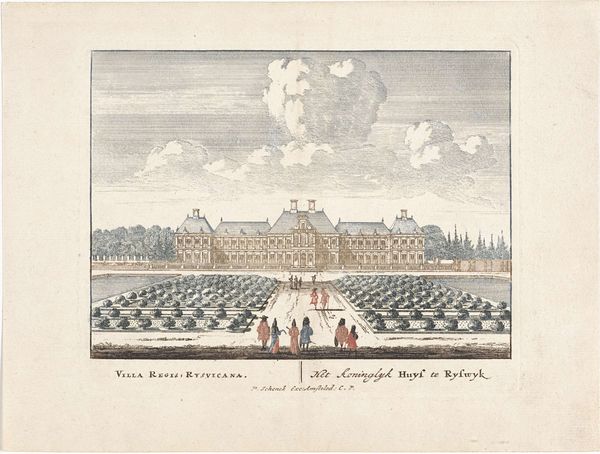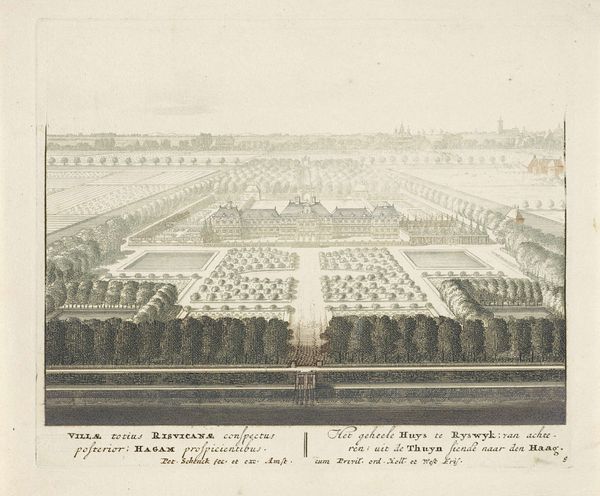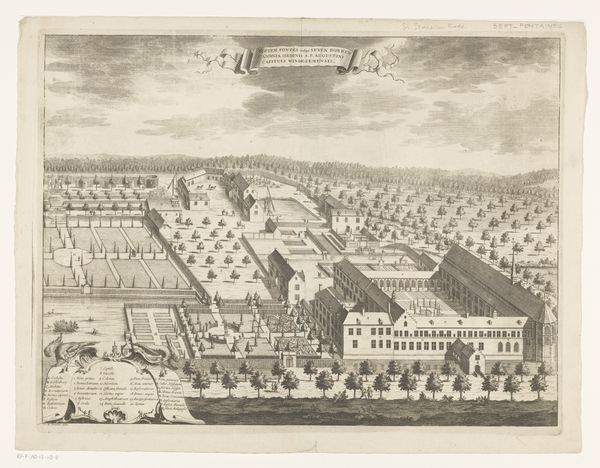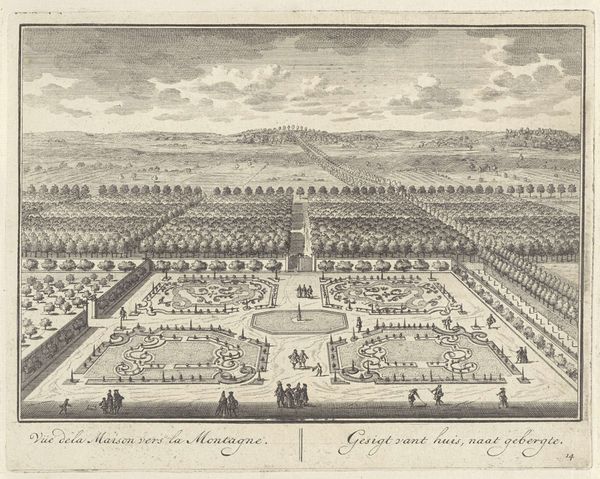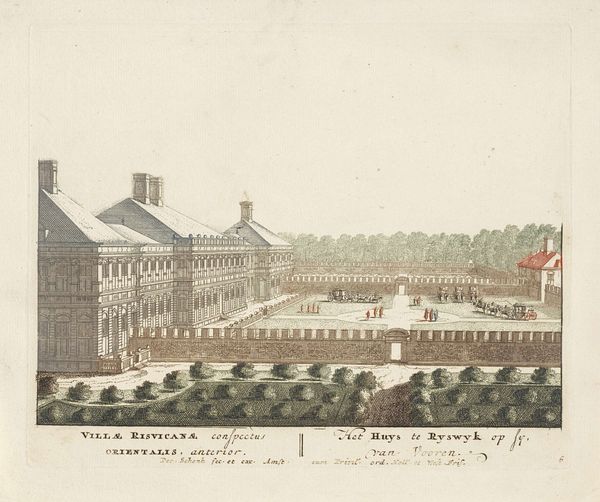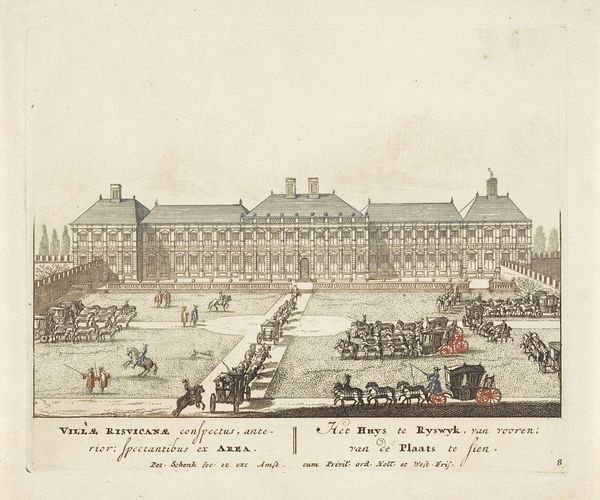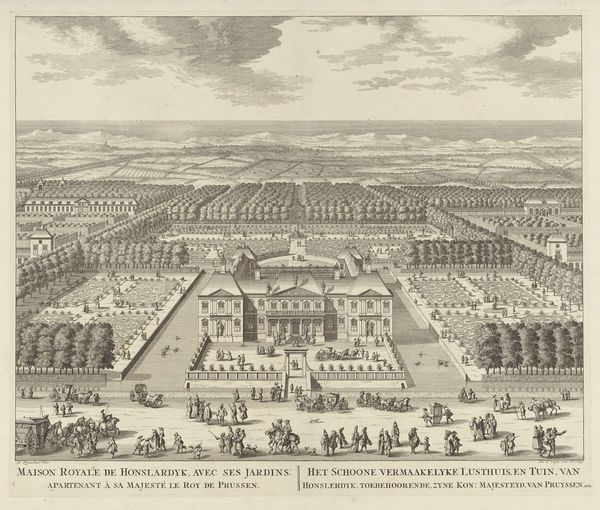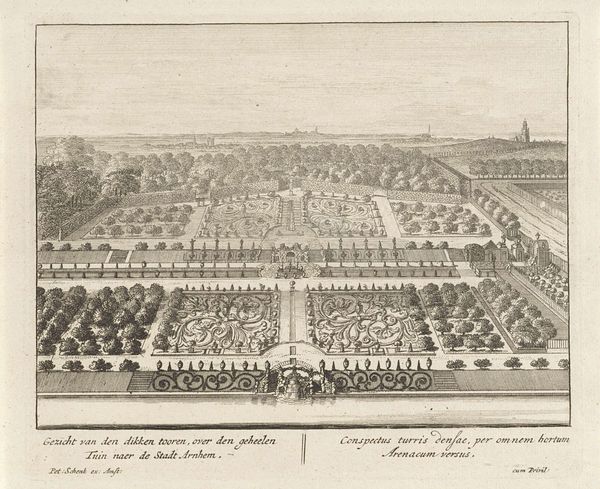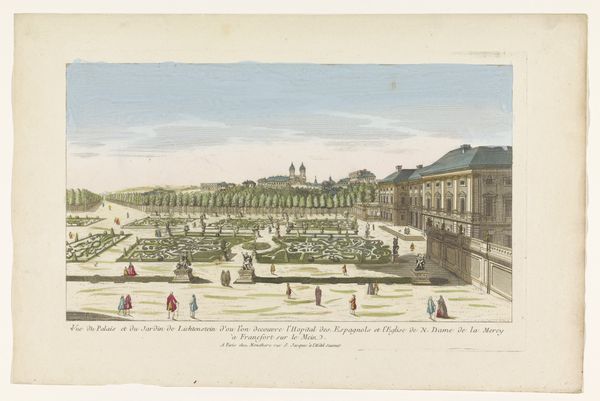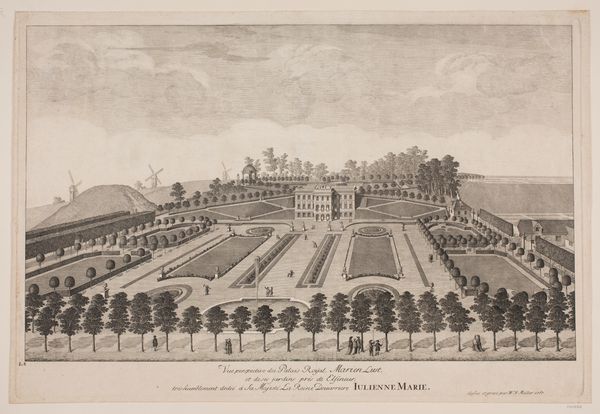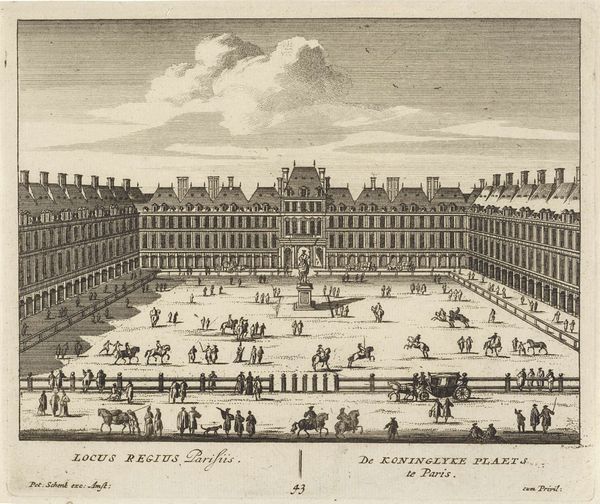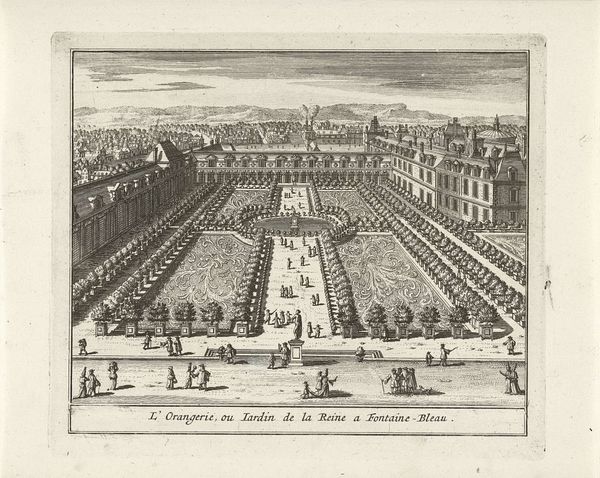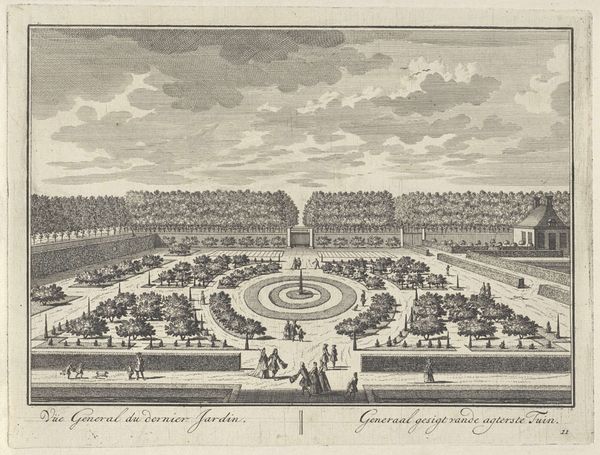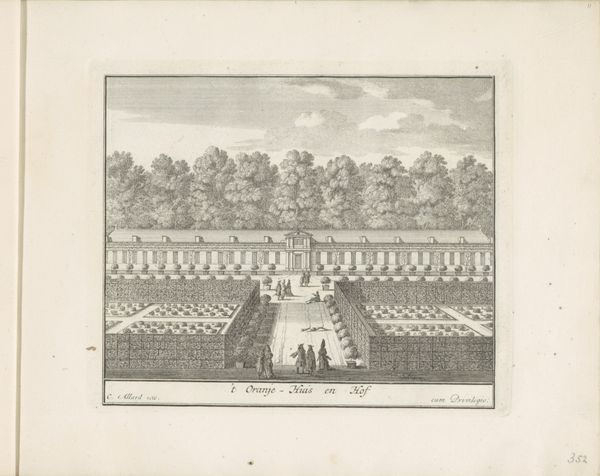
Gezicht op de achterzijde en de tuin van Huis ter Nieuburch te Rijswijk 1697
0:00
0:00
print, engraving, architecture
#
baroque
#
dutch-golden-age
# print
#
landscape
#
engraving
#
architecture
Dimensions: height 163 mm, width 198 mm
Copyright: Rijks Museum: Open Domain
Pieter Schenk created this print of Huis ter Nieuburch in Rijswijk, likely in Amsterdam, sometime around the turn of the 18th century. It pictures the rear facade and gardens of the palatial Huis ter Nieuburch, capturing a moment of leisure amongst its well-to-do inhabitants. Prints like this are revealing cultural documents. Not only does this image illustrate the lifestyle of the Dutch elite, but the print itself as a commodity reflects the sophisticated economic structures of the Netherlands at this time. We see too, in the rigid formality of the garden, a visual metaphor for the social hierarchies of the era. The Dutch Republic was a society ordered by class and status, a fact made visually evident in the regimented landscaping that surrounds the main house. As historians, our work is to peel back the layers of meaning contained within such images. By examining the context in which it was created, we can better understand the social and political landscape of the time, and the ways in which art served to reflect and reinforce existing power structures.
Comments
No comments
Be the first to comment and join the conversation on the ultimate creative platform.
